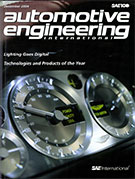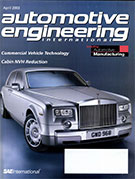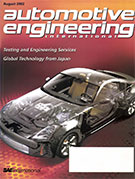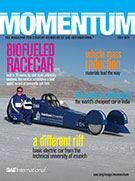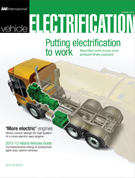Magazine

Automotive Engineering International 2013-06-04
2013-06-04
Global Viewpoints - Europe: Smartening up R&D As every aspect of automotive technology makes rapid advances, R&D becomes ever more complex and faces additional pressures on cost and time. In our annual report from Europe, we spoke to very senior executives about their R&D methods and the demanding criteria they face. LEDs light the way for SuperTruck A research team developed a group of low-energy; high-output LED lamps for forward lighting that could be retrofitted into the truck's current incandescent headlamp housing and lens. Plastic proliferation under the hood Plastic components continue to displace metal engine parts because of cost and weight advantages.

